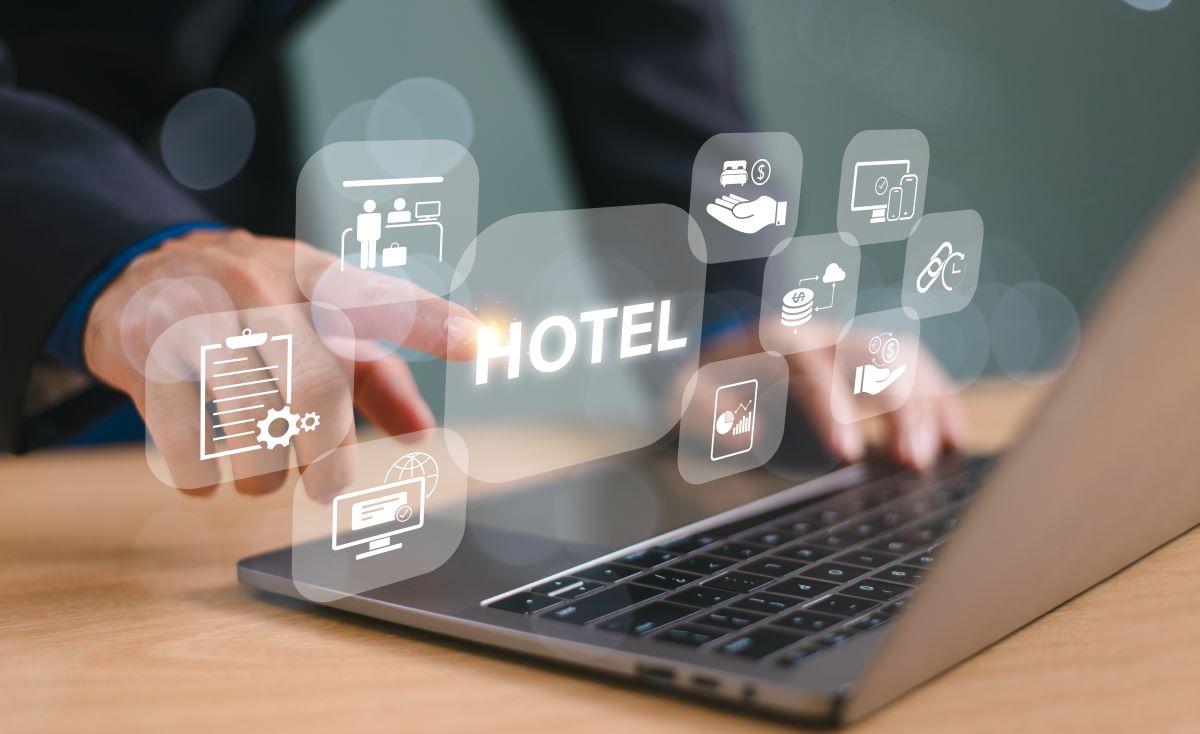Sponsored content
The hospitality landscape across Ireland has shifted dramatically. You’ve probably noticed it yourself – guests arrive with different expectations than they did even five years ago. They’re comparing your property not just to the hotel down the road, but to that boutique place they stayed at in Copenhagen last summer. And honestly? They’re right to expect more.
Running a hospitality business here means constantly adapting. The weather alone presents unique challenges (when doesn’t it?), but there’s something more fundamental at play. Your property isn’t just accommodation anymore – it’s an experience, a story, a memory in the making. The question is: does your property tell the story you want it to tell?
Understanding When It’s Time for Property Changes
You know that feeling when you walk through your own property and suddenly see it through fresh eyes? Maybe it’s after visiting a competitor’s newly renovated venue, or perhaps it’s triggered by yet another review mentioning “dated décor”. These moments of clarity can be uncomfortable, but they’re invaluable.
The signs are often subtle at first. Occupancy rates might dip just a percentage point or two. Nothing dramatic. But then you notice guests aren’t booking return visits like they used to. Your average daily rate feels stuck whilst everyone else seems to be pushing theirs up. The maintenance bills keep climbing – that boiler’s on its last legs, and didn’t you just fix those windows two years ago?
Here’s what many hospitality owners miss: waiting for obvious decline means you’ve already lost ground. The most successful properties in Ireland anticipate change rather than react to it. They recognise patterns in guest feedback before they become complaints. A few mentions of “could use updating” in reviews? That’s your early warning system.
Market conditions across both the Republic and Northern Ireland have created interesting dynamics. Tourist numbers have rebounded strongly, but they’re not distributed evenly. Some areas are seeing unprecedented demand whilst others struggle to maintain pre-2020 levels. Your property’s performance needs to be viewed within this broader context. Are you underperforming because of your property, or is the entire area experiencing a shift?
The financial indicators tell their own story. When your revenue per available room starts lagging behind regional averages, it’s rarely about your service quality. Often, it’s the physical space letting you down. Guests might love your staff, rave about your breakfast, but if the rooms feel tired or the public spaces uninspiring, they’ll book elsewhere next time.
Strategic Property Decisions: Renovate vs. Relocate
This might be the biggest decision you’ll face as a hospitality owner. Do you pour resources into transforming your current property, or is it time for a completely fresh start? There’s no universal answer, but there are ways to think through it clearly.
Location remains king in hospitality, but its definition has evolved. A prime city-centre spot isn’t automatically better than a rural retreat anymore. What matters is alignment – does your location match what your ideal guests are seeking? You might have the most beautifully renovated property, but if you’re trying to attract leisure tourists in an area that’s become predominantly business-focused, you’re swimming against the tide.
The renovation route offers familiarity. You know the building’s quirks, understand the local market, have established supplier relationships. But renovations in older Irish properties can uncover nasty surprises. That charming Georgian façade might hide electrical systems that need complete replacement. Those character features guests love? They often come with listed building restrictions that limit your options and inflate costs.
Financial considerations extend beyond the immediate investment. A major renovation typically means closure or partial closure. Can you absorb months of reduced or zero revenue? Some owners discover that selling a property in Ireland provides the capital and freedom to acquire something that better fits their vision – perhaps a purpose-built structure without the constraints of historical preservation, or a location that better matches emerging travel patterns.
The emotional element can’t be ignored either. Maybe you’ve poured years into this property. Every corner holds memories. But business decisions require clear-headed analysis. Would a potential buyer see more value in your property than you can extract from it? Could fresh capital deployed elsewhere yield better returns?
Consider too the operational advantages of starting fresh. New builds or recently constructed properties offer energy efficiency that’s nearly impossible to retrofit into older structures. They’re designed for modern operations – proper back-of-house flow, accessible rooms that meet current standards without awkward adaptations, technology infrastructure built in rather than bolted on.
Creating a Memorable First Impression
Those first thirty seconds after a guest enters your property? They’re forming opinions that will colour their entire stay. It’s not fair, but it’s human nature. And in hospitality, perception becomes reality remarkably quickly.
The journey actually starts before they reach your door. What do they see on approach? If they’re navigating a poorly lit car park or struggling to find the entrance, you’ve already created friction. The best properties guide guests intuitively from arrival to check-in, removing any uncertainty or stress from those initial moments.
Your reception area works harder than any other space. It needs to function efficiently for check-ins whilst also conveying your property’s personality. Too clinical, and you lose warmth. Too cluttered, and you appear disorganised. The sweet spot balances operational needs with aesthetic appeal.
Think about the sensory experience. What does your lobby smell like? (Please don’t say cleaning products.) What’s the first sound guests hear? Background music sets a tone, but the wrong choice grates quickly. Natural light transforms spaces, but harsh overhead lighting can undo all your design efforts.
Accessibility isn’t just about compliance anymore – it’s about genuine inclusivity. Can guests with mobility challenges navigate easily? Is your signage clear for those with visual impairments? These considerations, properly addressed, benefit everyone. That ramp helps guests with heavy luggage. Clear signage reduces questions at reception.
The check-in process itself deserves scrutiny. However beautiful your lobby, if guests queue for fifteen minutes to get their key, frustration builds. Some properties have moved to mobile check-in, but don’t abandon the human touch entirely. Technology should enhance service, not replace it.
Enhancing Your Property’s Curb Appeal
Ireland’s weather presents unique challenges for exterior presentation. What looks pristine in June might appear weatherbeaten by November. But that’s no excuse for neglect – if anything, it demands smarter choices in materials and design.
Landscaping here requires pragmatism. Those delicate Mediterranean plants you admired on holiday? They’ll struggle through an Irish winter. Native plants aren’t just hardier; they connect your property to its surroundings. Guests increasingly value this sense of place. A coastal property with salt-tolerant planting feels authentic. A countryside hotel with indigenous wildflower meadows tells a story.
Exterior lighting serves multiple purposes. Yes, it’s about safety and security, but thoughtful illumination creates drama and welcome. Uplighting on architectural features, pathway lighting that guides without glaring, entrance lighting that flatters arriving guests – these details matter more than you might think.
Your exterior messaging needs to work as hard as your interior design. How do you communicate what makes you special to passing traffic or arriving guests? Some properties rely entirely on traditional static signage, missing opportunities to be dynamic and engaging. Custom printed outdoor displays offer flexibility that permanent signage can’t match. You can promote seasonal offers, highlight awards, or simply create visual interest that changes with your business needs. Weather-resistant materials mean these work year-round in Irish conditions, whether you’re facing Atlantic storms or those rare sunny spells.
Don’t underestimate the power of maintenance in perception. Peeling paint suggests decline, even if everything inside gleams. Weeds in the car park imply carelessness. These might seem like small things, but guests extrapolate from what they see. If the exterior isn’t cared for, what else might be neglected?
Interior Upgrades That Drive Guest Satisfaction
The gap between home comforts and hospitality standards has narrowed dramatically. Guests compare your rooms to their own bedrooms – often favourably appointed with high-thread-count sheets and premium mattresses. You’re not just competing with other hotels anymore; you’re competing with the comfort of home.
Bedroom upgrades deliver the most direct impact on satisfaction. It starts with the bed – the non-negotiable centrepiece of any guest room. Consumer mattresses might seem like a cost-saving option, but they’re false economy in commercial settings. King Koil hotel contract mattresses are engineered for durability and consistent support across thousands of sleep cycles. They maintain their shape and comfort far longer than residential alternatives, and many feature antimicrobial treatments essential for hygiene standards. When guests consistently mention great night’s sleep in reviews, you know you’ve got this fundamental right.
Beyond the bed, consider the complete sleep environment. Blackout curtains aren’t luxury anymore – they’re expected. Temperature control that actually works, windows that block sound, lighting that offers options from bright task lighting to gentle ambience. These elements work together to create restful spaces.
Bathrooms present particular challenges in older Irish properties. Retrofitting modern expectations into spaces designed for different eras tests creativity and budgets. But guests notice everything here – water pressure, temperature consistency, storage space, lighting quality. The trend toward walk-in showers isn’t just aesthetic; it’s practical for accessibility and maintenance.
Common areas need to work harder than ever. They’re not just transition spaces; they’re revenue opportunities and brand expressions. A lobby that encourages lingering might boost bar sales. Comfortable seating areas become impromptu meeting spaces for business travellers. Even corridors can contribute to the experience with thoughtful lighting and local artwork.
Technology integration can’t be afterthought anymore. Guests arrive with multiple devices expecting seamless connectivity. But it’s not just about WiFi strength – it’s about sufficient power outlets positioned where people actually use them. USB charging ports, smart TVs that actually connect to streaming services, intuitive climate controls. These aren’t fancy extras; they’re baseline expectations.
Sustainable Upgrades for Modern Hospitality
Sustainability has moved from nice-to-have to business essential. Your guests expect it, regulations increasingly demand it, and honestly? It makes financial sense when done right. Ireland’s reputation for green landscapes creates additional expectations – visitors expect environmental consciousness to match the natural beauty.
Energy efficiency offers the clearest returns. LED lighting retrofits pay for themselves remarkably quickly. Modern heating systems slash bills whilst improving guest comfort. But the real gains come from systematic approaches – building management systems that adjust heating and cooling based on occupancy, key card systems that power down empty rooms, solar panels that work even in Irish weather (yes, really).
Water conservation matters everywhere, but particularly in Ireland where people assume abundant rainfall means unlimited supply. Low-flow fixtures don’t mean poor guest experience when chosen carefully. Modern shower heads maintain pressure whilst reducing consumption. Dual-flush toilets are now standard. Linen reuse programmes, once novel, are now expected by environmentally conscious guests.
Waste reduction challenges every hospitality business, but solutions exist. Single-use toiletries are increasingly unacceptable – refillable dispensers with quality products work better. Food waste reduction starts with better planning but extends to composting systems and partnerships with local farms. Some properties have eliminated single-use plastics entirely without any guest complaints.
The business case for sustainability extends beyond cost savings. Certification programmes like Green Hospitality Ireland provide marketing advantages. Corporate guests often require sustainability credentials for approved supplier lists. Leisure travellers actively seek eco-friendly options. What started as doing the right thing has become competitive advantage.
But beware greenwashing. Today’s guests are sophisticated and cynical about empty claims. Token gestures like removing plastic straws whilst ignoring energy waste fool nobody. Authentic sustainability requires systematic change and transparent communication. Share your journey, including challenges and setbacks. Guests appreciate honesty over perfection.
Measuring Success and Planning Next Steps
You’ve made changes. Invested time, money, and energy into improvements. But how do you know if they’re working? Gut feeling isn’t enough anymore – you need data-driven insights to guide future decisions.
Traditional metrics still matter. Occupancy rates, average daily rates, revenue per available room – these remain foundational. But dig deeper. Are improved rates coming from existing guest types paying more, or are you attracting new market segments? Is occupancy spreading more evenly across the week, reducing reliance on weekend breaks?
Guest satisfaction scores tell important stories, but only if you’re measuring the right things. Overall ratings mask specific insights. Break down feedback by area – rooms, food and beverage, service, facilities. Patterns emerge that guide your next investments. Maybe your room upgrades are earning praise, but the breakfast offering now looks dated by comparison.
Online reviews require sophisticated analysis now. Star ratings matter, but sentiment analysis reveals more. What specific words appear repeatedly? How do mentions of comfort, cleanliness, or value change over time? Track not just your own reviews but competitors’ too. Their guests’ complaints might reveal your opportunities.
Don’t ignore operational metrics. Staff turnover often reflects property conditions – nobody wants to work in tired, poorly maintained environments. Maintenance costs trending downward suggest your upgrades are taking hold. Energy consumption per occupied room shows if sustainability investments deliver promised returns.
Creating your next phase plan requires balancing multiple factors. What delivers the best return on investment? Which improvements remove operational headaches? What changes position you for emerging trends? The best properties maintain rolling three-to-five-year plans, adjusting as markets evolve but always moving forward.
Remember that standing still means falling behind in hospitality. Your competitors aren’t resting, and guest expectations only move in one direction. But with thoughtful planning and strategic investments, your property can exceed those expectations whilst building a sustainable, profitable business. The Emerald Isle’s hospitality sector has weathered countless storms. Properties that adapt and improve don’t just survive – they thrive.
Receive quality journalism wherever you are, on any device. Keep up to date from the comfort of your own home with a digital subscription.
Any time | Any place | Anywhere












